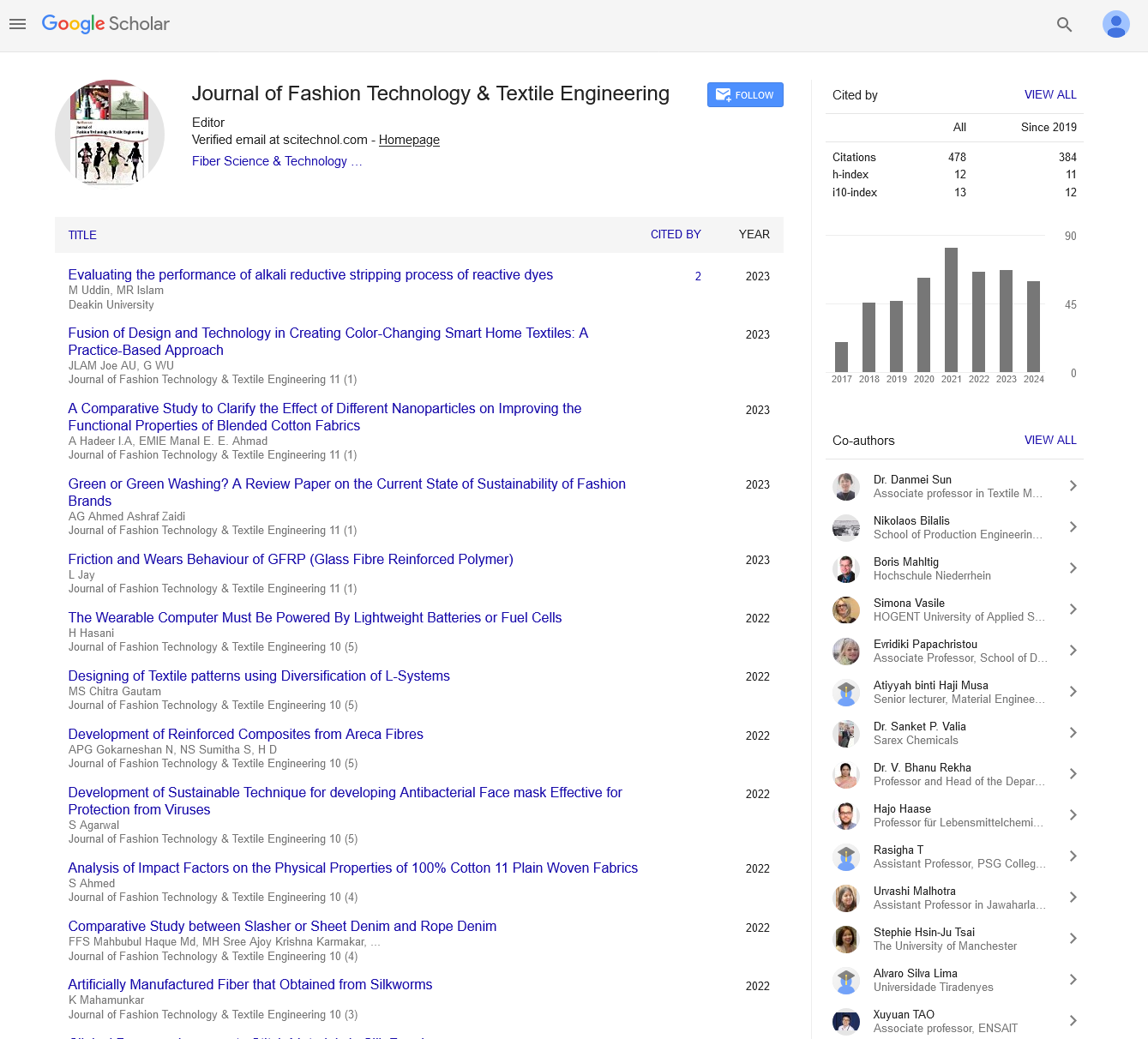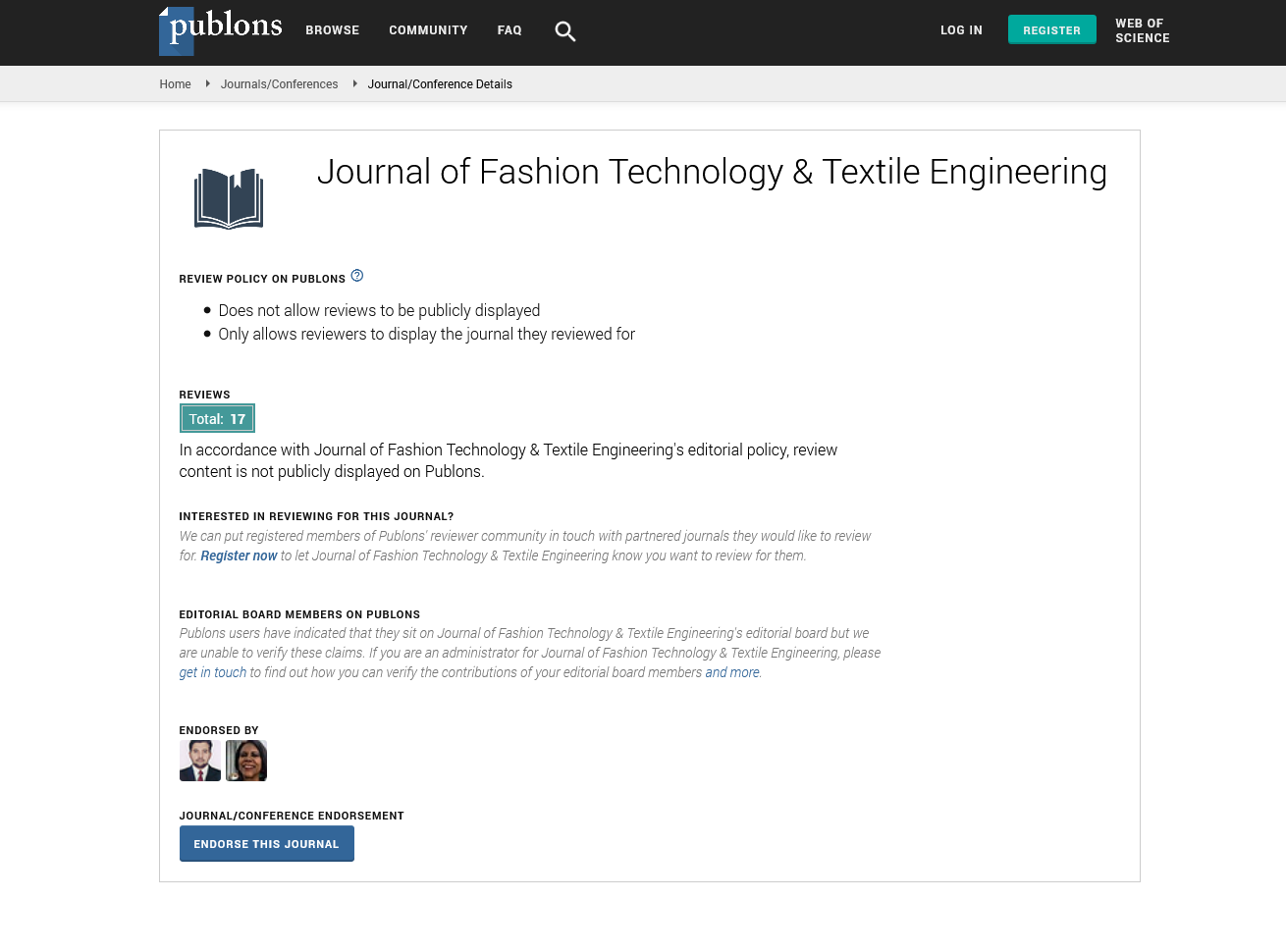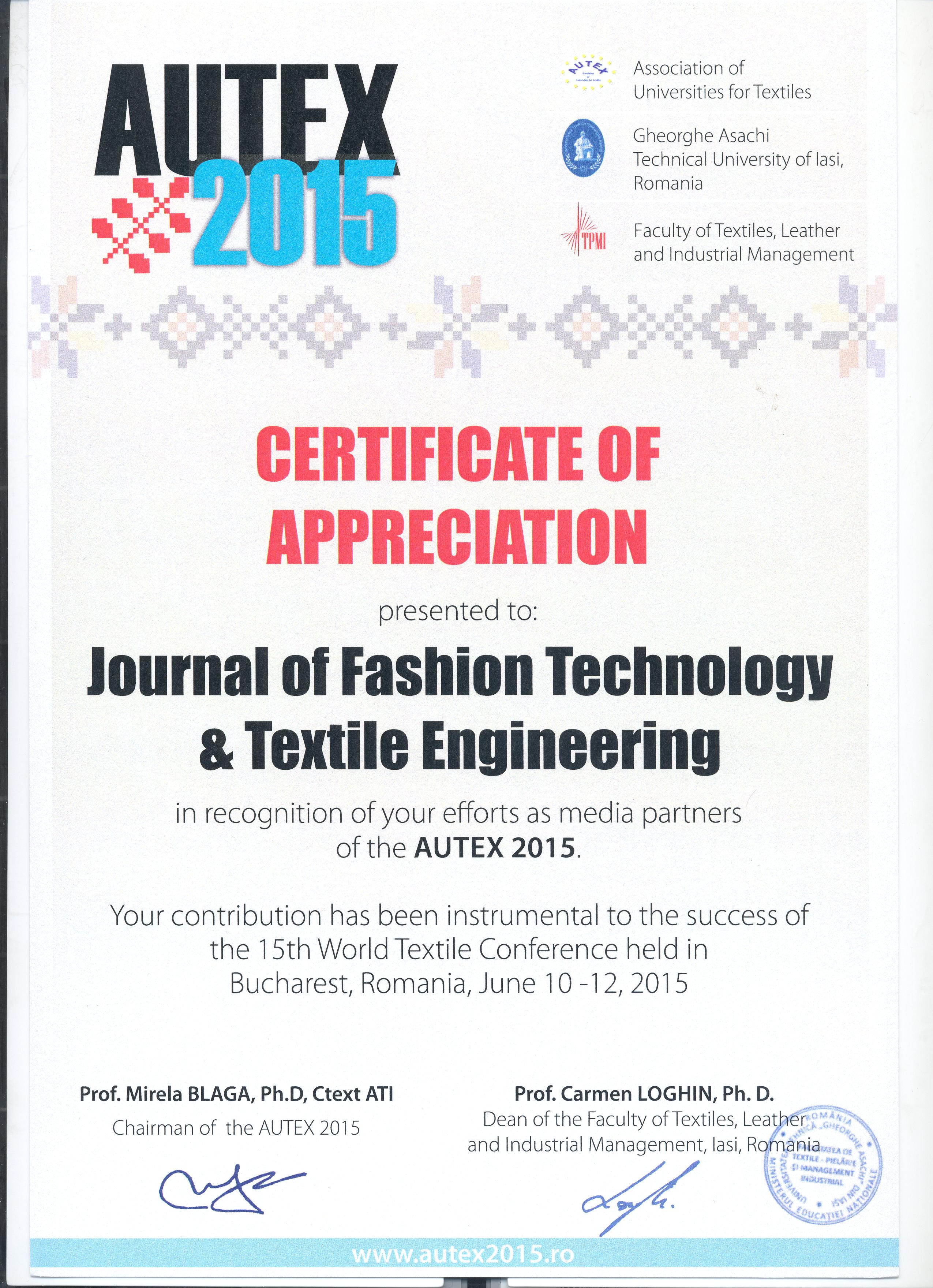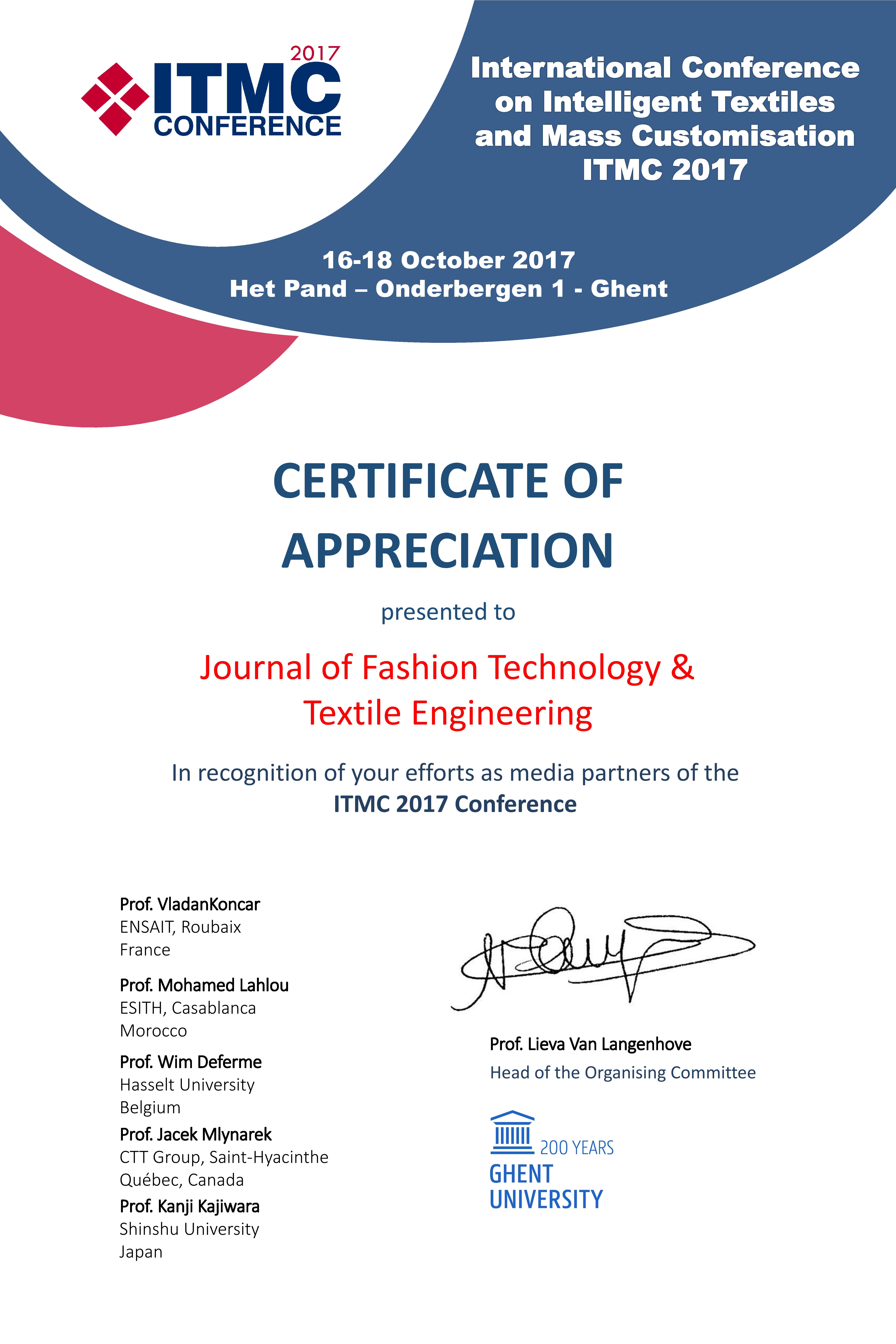Short Communication, J Fashion Technol Textile Vol: 12 Issue: 5
The Intersection of Artificial Intelligence and Fashion Forecasting
Carlos Alvarez*
1Department of Textile Engineering and Fashion, Polytechnic University of Valencia, Valencia, Spain
*Corresponding Author: Carlos Alvarez,
Department of Textile Engineering and
Fashion, Polytechnic University of Valencia, Valencia, Spain
E-mail: carlos_alvarez78@gmail.com
Received date: 23 September, 2024, Manuscript No. JFTTE-24-152119;
Editor assigned date: 25 September, 2024, PreQC No. JFTTE-24-152119 (PQ);
Reviewed date: 09 October, 2024, QC No. JFTTE-24-152119;
Revised date: 17 October, 2024, Manuscript No. JFTTE-24-152119 (R);
Published date: 25 October, 2024, DOI: 10.4172/2329-9568.1000371.
Citation: Alvarez C (2024) The Intersection of Artificial Intelligence and Fashion Forecasting. J Fashion Technol Textile 12:5.
Description
Fashion, a constantly evolving field now interlinks with technology as brands and designers turn to Artificial Intelligence (AI) for fashion forecasting. This combination has reshaped how trends are analyzed, predicted and applied, leading to faster and more accurate fashion cycles. Traditional fashion forecasting relied heavily on human intuition and market analysis. Experts studied cultural shifts and consumer behaviors, creating trend predictions based on data gathered from the streets and runways. Today AI matches this by providing more complete insights and higher precision. Machine learning algorithms, for instance, can analyze massive amounts of data in realtime, allowing fashion houses to understand trends quickly and indepth.
AI-powered tools now track patterns in consumer preferences across social media, e-commerce platforms and fashion blogs. By processing keywords, hashtags and images, AI can identify the rise of particular colors, fabrics or styles well before they hit mainstream awareness. This immediate analysis helps brands stay ahead of competitors by aligning their designs with evolving preferences [1,2]. Beyond social media, AI also selects through sales data, inventory records and regional buying habits. These inputs provide a whole view of consumer demand patterns, helping brands decide what designs to produce, where to distribute them and how much stock to prepare. Brands can avoid overproduction or underproduction through this kind of data, aligning their inventory with demand more closely than ever [3,4].
The impact of AI on fashion extends to personalized recommendations and customer experience. AI-driven recommendation systems have improved the way consumers discover new styles. By analyzing users browsing and purchase histories, these systems suggest outfits personalized preferences. This approach not only enhances customer satisfaction but also reduces return rates. Moreover, it connects customers with emerging designers whose aesthetics align with their style, development diversity in fashion choices [5,6]. AI’s ability to create simulations and virtual try-ons has transformed the online shopping experience. Virtual fitting rooms now allow customers to see how a garment might look on them before purchasing. This feature helps reduce the uncertainty of online shopping and minimizes returns. With 3D modeling and augmented reality, brands can even showcase entire collections digitally, eliminating the need for physical prototypes and reducing production time and costs [7].
One of AI’s major contributions to fashion forecasting is in sustainability. The fashion industry’s environmental impact has led consumers and brands to seek eco-friendly practices. AI supports these efforts by optimizing production processes and predicting demand more accurately, which prevents excessive waste. Machine learning can also identify sustainable materials and processes that suit specific designs or collections, guiding brands toward choices that align with sustainable goals [8,9]. AI-driven sustainability insights extend into the resale market as well. Algorithms can assess the value and condition of pre-owned items, promoting circular fashion by making second-hand clothes more accessible and affordable. By tracking demand for vintage and resale items, AI helps brands understand shifting consumer interests toward sustainable choices.
Despite AI’s advantages, human touch remains essential in fashion. AI excels in analyzing trends and optimizing production, yet designers’ creative insights and emotional connections with audiences continue to drive the essence of fashion. Successful forecasting often combines AI insights with human intuition, bringing unique ideas to life in a way machines alone cannot achieve. As AI becomes increasingly integrated into fashion, it presents new possibilities for personalized, efficient and sustainable fashion forecasting. Its role in this field has expanded well beyond trend analysis, impacting how consumers engage with fashion and how brands operate [10].
References
- Rathore B (2019) Artificial Intelligence in Sustainable Fashion Marketing: Transforming the supply chain landscape. Artificial Intelligence 8(2).
- Cianfanelli E (2023) Ai, fashion and rights: The rise of artificial intelligence in redefining fashion paradigms. Fash High 2:6-10.
- Pereira AM, Moura JA, Costa ED, Vieira T, Landim AR, et al. (2022) Customer models for artificial intelligence-based decision support in fashion online retail supply chains. Decis Support Syst 158:113795.
- Giri C, Jain S, Zeng X, Bruniaux P (2019) A detailed review of artificial intelligence applied in the fashion and apparel industry. IEEE Access 7:95376-95396.
- Giovanola B, Tiribelli S, Frontoni E, Paolanti M (2023) Ethical implication of artificial intelligence in the fashion industry: A comprehensive analysis. Fashion Highlight 31(2):22-28.
- Rathore B (2017) Beyond trends: Shaping the future of fashion marketing with AI, sustainability and machine learning. Significance 6(2).
- Wong C, Guo ZX, Leung SY (2013) Optimizing decision making in the apparel supply chain using artificial intelligence (AI): From production to retail. Elsevier 13(5).
- Hamoudia M, Makridakis S, Spiliotis E (2023) Forecasting with artificial intelligence: Theory and applications. Springer Nature.
- Garcia CC (2023) Contemporary changes and challenges in the practice of trend forecasting. Int J Fash Stud 10(1):75-98.
- Rico Gomez R, Lorentz J, Hartmann T, Goknil A, Pal Singh I, et al. (2024) An AI pipeline for garment price projection using computer vision. Neural Computing and Applications17:1-21.
 Spanish
Spanish  Chinese
Chinese  Russian
Russian  German
German  French
French  Japanese
Japanese  Portuguese
Portuguese  Hindi
Hindi 


